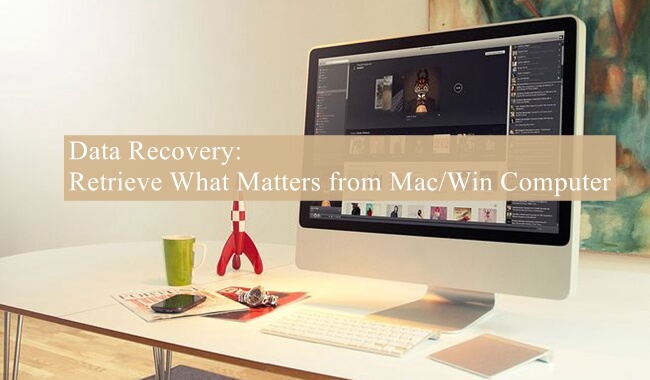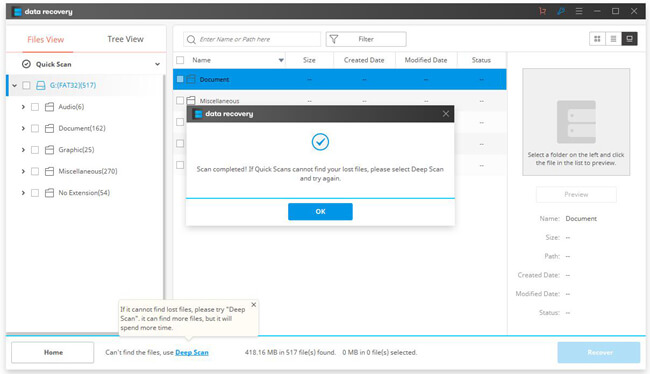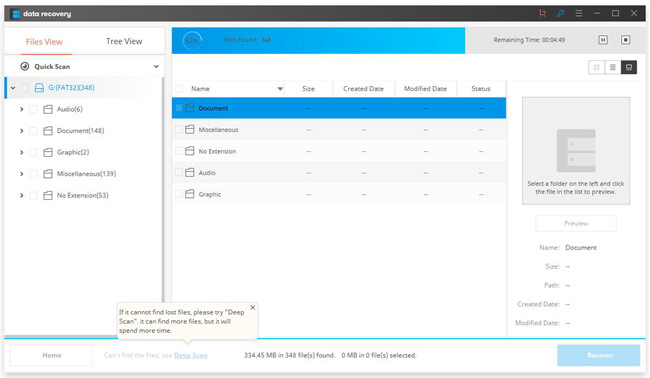With the help of computers and laptops, people are able to deal with things effectively and immaterially. For that, material files is less needed nowadays and instead increasing immaterial information is stored in computers. Audio files are one of the most used immaterial files both in daily life and at work, including Records, Voice Memos, Ringtone, MPS, and Songs.
People Also Read:
● How to Recover Deleted videos from PC/Laptop?
● How to Recover deleted MP3 Files from Android?
However, somehow one might accidentally remove audio files from an internal hard disk on PC or even cannot find the desired file without his knowledge. If you're looking for a way to retrieve audio files on your Windows PC/Laptop, you would not like to miss the followings.
Feasibility: Why Is It Possible to Recover Deleted Audio Files?
As a rule, most data stored in a computer are written on a hard drive, taking up certain space. When content like an audio file is removed from the computer, it would get invisible and inaccessible in a normal way, but still exists in the space that it used to occupy.
As long as space is not overwritten by new data, it's highly possible to get the deleted audio file back via professional software. However, if overwritten, I'm afraid there is nothing I can do. So, it's of importance to stop using your computer after data loss and then instantly try the workable solution below.

Method: How to Retrieve Lost Audio File from Hard Disk Drive?
Data Recovery is well-designed to scan and display those inaccessible files on the hard disk with a user-friendly interface. This program works to retrieve audio files with so many extensions like AIF/AIFF, M4A, MP3, WAV, WMA, MID/MIDI, OGG, AAC, etc that you won't miss any single one of your audio files. Now, let's see how it goes. Don't Miss: To have further knowledge of Data Recovery, here is a full guide - [Hard Disk Recovery]The Best Data Recovery for Win/Mac.
Step 1. Install Data Recovery
To begin with, make sure that Data Recovery for Win is properly installed on your computer or laptop. Then, launch the software and you'll be asked to select data to recover. Please select "Audio" and then click "Next".

Step 2. Scan A Specific Location
Now, you should select a location to start scanning. The more specific, the faster data would be found. If you're not sure audio files lost in which folder, then you'd better choose Disk (C:)/ (D:)/ (E:)/ (F:) etc. However, it's not recommended to scan the whole computer, for it takes too long.

The default scan is Quick Scan. When it fails to dig out your lost audio files, the program will prompt you to give it a try on "Deep Scan", but this would take a much longer time.

Step 3. Restore Lost Audio Files
Don't waste your valuable time waiting. You should savor a book or go for whatever you like. When scanning is done, you can see those audio files listed on the screen. Then, please select desired ones and click on the "Recover" button as to export them to the computer.

Pros & Cons: Why Is Data Recovery Preferable?
Here you may bear a misgiving in mind that why you should try this paid product? Actually, Data Recovery stands out from other hard disk recovery software in many ways. Now, let me make it clear for you.
1. Support over 7 types of recoverable data with various extensions supported.
- Photos(18): JPG, TIFF/TIF, PNG, BMP, GIF, PSD, CRW, CR2, NEF, ORF, RAF, SR2, MRW, DCR , WMF, DNG, ERF, RAW, etc.
- Audio(8): AIF/AIFF, M4A, MP3, WAV, WMA, MID/MIDI, OGG, AAC, etc.
- Video(12): AVI, MOV, MP4, M4V, 3GP, 3G2, WMV, ASF, FLV, SWF, MPG, RM/RMVB, etc.
- Email(12): PST, DBX, EMLX, etc.
- Document(8): DOC/DOCX, XLS/XLSX, PPT/PPTX, PDF, CWK, HTML/HTM, INDD, EPS, etc.
- Others(3): ZIP, RAR, SIT, and other useful data.
2. Support quite a number of devices.
- All types of storage devices with the file system NTFS, FAT16, FAT32 or exFAT
- Computer & Laptop (Running Mac OS X 10.13(High Sierra), 10.12(Sierra), 10.11(El Capitan), 10.10(Yosemite), 10.9(Mavericks), 10.8, 10.7, or 10.6 or Windows 10/8.1/8/7/Vista/XP)
- Recycle Bin included
- Memory Cards
- Digital Camera Camcorder
- Hard Drive, like Seagate
- Flash Drive
- Removable Drives (Floppy Disk, Zip Disk, iPod (Nano, Classic & Shuffle), Cell Phones: BlackBerry, Nokia, Android phone
3. Easy to use with steps like "Select Data - Choose Location - Scan - Preview - Recover", requiring no tech knowledge.
A free trial version of Data Recovery allows users to try whether lost data truly can be found. Then, whether or not to make a purchase is totally up to you. If you're having problems when using Data Recovery, let me help you out.
